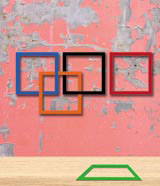Put the torch to tradition
If the opening ceremony is ‘the biggest commercial in the world’, how do you ensure the Olympic Games stay true to their ideals? Trish Lorenz finds out

The Olympic Games returned to their spiritual home last week with the opening of the 28th Olympiad in Athens. Founded on the ethos of amateur endeavour, the Olympics were historically a symbol of authenticity and the antithesis of materialistic concerns.
While sporting prowess is still of paramount importance to the games, an increasingly commercial agenda is also in play. Design and branding in particular have long since abandoned their amateur status; they now take a decidedly professional approach.
The 1996 Atlanta Olympics, with its corporate focus, is generally considered a turning point for its branding activity. But it is in Athens that branding and design take yet another step forward, as it is the first host city to have worked with the International Olympic Committee’s image and with identity consultants – in this case the Olympic Games Identification Project.
According to Brad Copeland, the IOC’s advisor for OGIP, ‘What was once approached as a series of design assignments is now seen as an opportunity to build a cohesive brand experience across all design and media channels.’
From the identity and mascots to the medals and the Olympic torch, every aspect of the event is designed to play a role in the ‘look of the games’ (see box) and the OGIP team ‘mentored’ Athens through the entire design process.
As part of the project, an Olympic Design Conference was established in 1988 to inspire both Greek and international designers and to begin development of the identity. It is now a regular fixture of the Olympic calendar, with the third conference held last month in Beijing, host to the 2008 Olympics.
Copeland evangelises the importance of design in the Olympic Games. He believes design helps ‘shatter stereotypes’ and that the ‘look of the games’ can make a positive impact on the athletes’ performance.
‘You only have to see the Olympic rings to know this is a different kind of experience. And part of our challenge is to translate the symbolic power of the Olympics to every aspect of the games’ presentation,’ he says.
The opening ceremony, an event that sets the tone for the games as a whole, perhaps encapsulates the challenges designers face when working to this ambitious brief. Jack Morton Worldwide director of public events David Zolkwer is producing the opening and closing sequences in Athens. He maintains that it is ‘not simply about inaugurating the start of the competition’.
‘An opening ceremony is an opportunity to make a statement or reinvent [the host city] in front of the world. It’s a huge branding experience, the biggest commercial in the world,’ he says. ‘There will be four billion people world-wide tuning in to see what Athens has to say.’
The key creative challenge for designers working to an Olympic brief lies in establishing the values of the Olympic ideal within the context of the host city’s culture, says Zolkwer. He describes it as ‘balancing the need to tell a universal story while simultaneously reflecting Greek culture and personality’.
‘The opening ceremony [for example] needs to have something to say that is relevant to everyone. It needs to celebrate the attributes of our time using a rich vein of Greek culture and history,’ he adds.
Creative output also needs to take into consideration the huge diversity of cultures, expectations and languages of the international audience. ‘You need to find a way to present what is true to the people of Athens and Greece in a way that fills the world with a sense of shared pride,’ claims Zolkwer.
And there’s the obvious requirement, over and above the entertainment and ratings values of a televised spectacle, to meet the needs of the many corporate sponsors involved.
Translating the symbolic power of the Olympics in an increasingly corporate environment is a complex task. If London is successful in its bid for the 2012 Games, designers across Britain will be gearing up to face a creative challenge of, you might say, Olympian proportions.
Visual applications that form the ‘look of the games’
The marque – the Athens 2004 emblem features a hand-rendered olive wreath in a palette of white and blue. Created in-house by Athens 2004 image and identity manager Theodora Mantzaris, the design was chosen following an international competition that saw 690 entries from 14 countries.
The torch – created by Greek designer Andreas Varotsos, the torch takes its inspiration from an olive leaf and aims to represent the connotations of peace and freedom associated with olive branches.
Games mascots – there has been an official mascot for the Games since 1972. This year’s pair, created by Greek consultancy Paragraph Design, were inspired by an ancient Greek doll and take their names – Phevos and Athena – from two Greek gods.
Sports pictograms – designed in house by Mantzaris, the 35 pictograms act as the visual reference for information related to the competition schedule and the venues.
Medals – created by Elena Votsi, who graduated from the Royal College of Art in 1991 with a Master of Arts in Jewellery and is now based in Greece, the medal’s front has been revamped for the first time since 1928 and now features the goddess Nike.
Posters – designed in-house, the poster features the emblem, a view of the Acropolis and a section of Panorama – an artwork reflecting Greece’s culture, history and natural environment.
Opening ceremony – created by Jack Morton Worldwide in conjunction with Greek creative director Dimitris Papaioannou, the ceremony is ‘imbued with Greek symbolism and culture but celebrates themes and preoccupations we all share’, according to Zolkwer.
-
Post a comment




